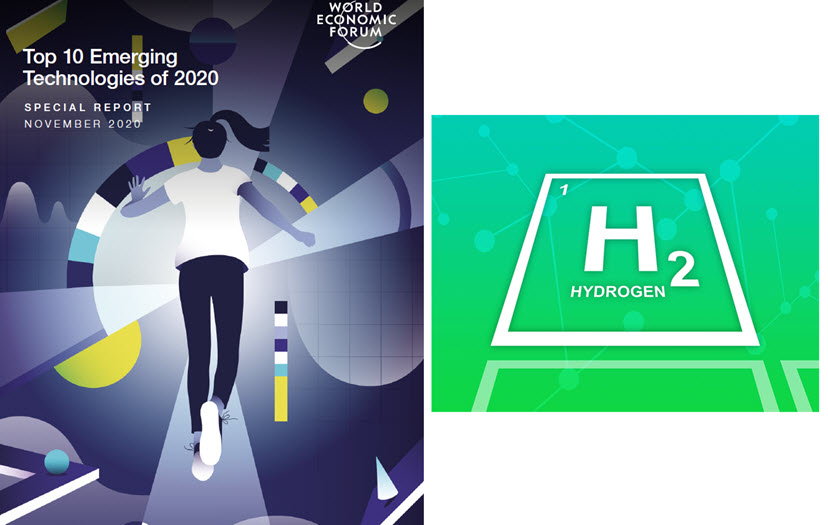
In its latest report, the World Economic Forum has named its most exciting technologies that emerged in 2020 and – according to its experts – have the greatest potential to positively transform society and industry. What opportunities will they unlock, what risks will they potentially pose?
One of these top emerging technologies is Green Hydrogen.
When hydrogen burns, the only by-product is water – which is why hydrogen has been an alluring zero-carbon energy source for decades. Yet the traditional process for producing hydrogen, in which fossil fuels are exposed to steam, is not even remotely zero-carbon. Hydrogen produced this way is called grey hydrogen; if the CO2 is captured and sequestered, it is called blue hydrogen.
Green hydrogen is different. It is produced through electrolysis, in which machines split water into hydrogen and oxygen, with no other by-products. Historically, electrolysis required so much electricity that it made little sense to produce hydrogen that way. The situation is changing for two reasons. First, significant amounts of excess renewable electricity have become available at grid-scale; rather than storing excess electricity in arrays of batteries, the extra electricity can be used to drive the electrolysis of water, “storing” the electricity in the form of hydrogen. Second, electrolysers are becoming more efficient.
Companies are working to develop electrolysers that can produce green hydrogen as cheaply as grey or blue hydrogen, and analysts expect them to reach that goal in the next decade. Meanwhile, energy companies are starting to integrate electrolysers directly into renewable power projects. For example, a consortium of companies behind a project called Gigastack plans to equip Ørsted’s Hornsea Two offshore wind farm with
100 megawatts of electrolysers to generate green hydrogen at an industrial scale.
Current renewable technologies such as solar and wind can decarbonize the energy sector by as much as 85% by replacing gas and coal with clean electricity. Other parts of the economy, such as shipping and manufacturing, are harder to electrify because they often require fuel that is high in energy density or heat at high temperatures.
Green hydrogen has potential in these sectors.
The Energy Transitions Commission, an industry group, says green hydrogen is one of four technologies necessary for meeting the Paris Agreement goal of abating more than 10 gigatonnes of carbon dioxide a year from the most challenging industrial sectors, among them mining, construction and chemicals.
Read the Report HERE
Read the most up to date Fuel Cell and Hydrogen Industry news at FuelCellsWorks




